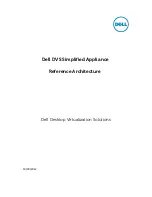
Chapter 4.
Installing Red Hat Enterprise Linux ES via Text
Mode
This release of Red Hat Enterprise Linux ES features a graphical, mouse-based installation program,
but you can also install Red Hat Enterprise Linux ES using a text mode, keyboard-based installation
program. This chapter briefly explains how to use the text mode installation program. Here are some
recommendations:
•
If you are new to Linux installations, read Chapter 3, first. The main focus of that chapter is the
graphical installation process, but most of the concepts apply to the text mode installation as well.
After reading that chapter, Section 4.1, will give you more information regarding the aspects of
installing Red Hat Enterprise Linux ES that do not apply to the graphical installation process.
Additionally, Appendix D may be helpful to you, since it discusses disk partition resizing. If you
plan to install Red Hat Enterprise Linux ES on a disk where another operating system is currently
installed, this knowledge will be crucial.
•
If you plan to install over a network (via NFS, FTP, or HTTP), you must make a network boot disk.
Chapter 1, explains how to do this.
•
If you have never used the text mode installation program, or need a refresher on its user interface,
read this chapter.
4.1. Things You Should Know
Before attempting to install Red Hat Enterprise Linux ES, you should collect information about your
system. This information will help prevent any surprises during the installation. You can find most
of this information in the documentation that came with your system, or from the system’s vendor or
manufacturer.
Chapter 2 provides a table for you to fill out with your specific system requirements, which helps you
keep up with any information needed during your installation. Please review the hardware table at
Table 2-1.
The most recent list of supported hardware can be found at http://hardware.redhat.com/hcl/. You
should check your hardware against this list before proceeding.
4.1.1. Basic Hardware Configuration
You should have a basic understanding of the hardware installed in your computer, including the
following:
•
Hard drive(s) — specifically, the number, size, and type. If you have more than one, it is helpful to
know which one is first, second, and so on. It is also good to know if your drives are IDE or SCSI.
If you have IDE drives, you should check your computer’s BIOS to see if you are accessing them in
linear mode. Please refer to your computer’s documentation for the proper key sequence to access
the BIOS. Note that your computer’s BIOS may refer to linear mode by other names, such as "large
disk mode." Again, your computer’s documentation should be consulted for clarification.
•
Memory — the amount of RAM installed in your computer.
•
CD-ROM — most importantly, the unit’s interface type (IDE, SCSI, or other interface) and, for non-
IDE, non-SCSI CD-ROMs, the make and model number. IDE CD-ROMs (also known as ATAPI)
are the most common type of CD-ROM in recently manufactured, PC-compatible computers.
Summary of Contents for LINUX ES 2.1 -
Page 1: ...Red Hat Enterprise Linux ES 2 1 Red Hat Enterprise Linux ES Installation Guide...
Page 10: ......
Page 18: ...8 Chapter 1 Steps to Get You Started...
Page 72: ......
Page 74: ...64 Appendix A Removing Red Hat Enterprise Linux ES...
Page 86: ...76 Appendix C Troubleshooting Your Installation of Red Hat Enterprise Linux ES...
Page 102: ...92 Appendix D An Introduction to Disk Partitions...
Page 110: ......
















































